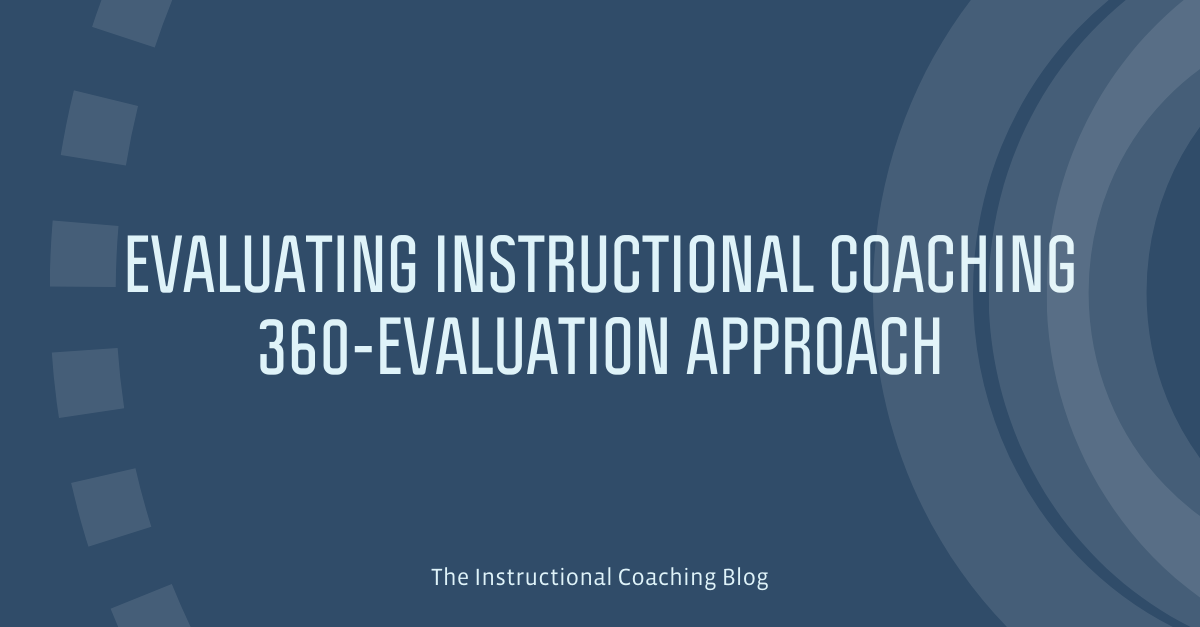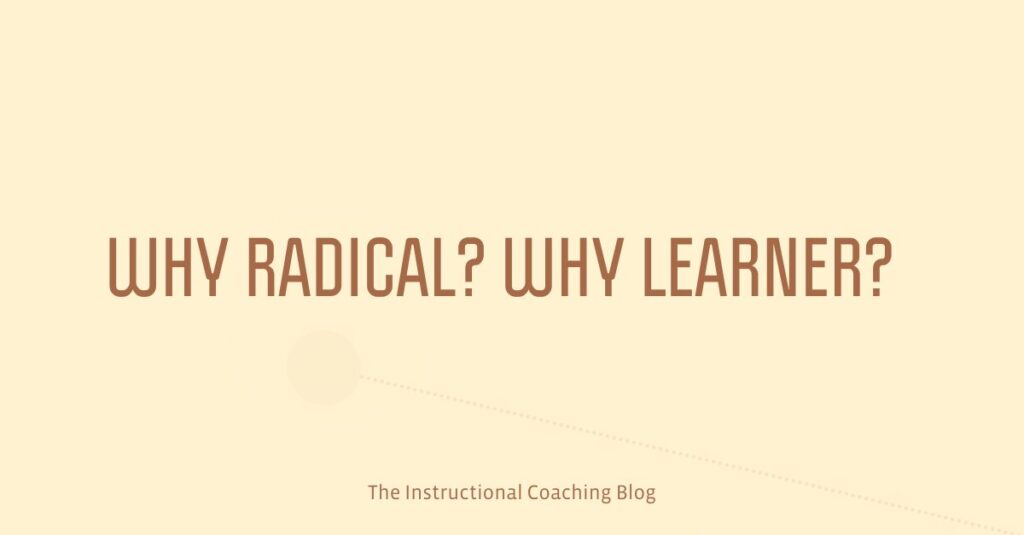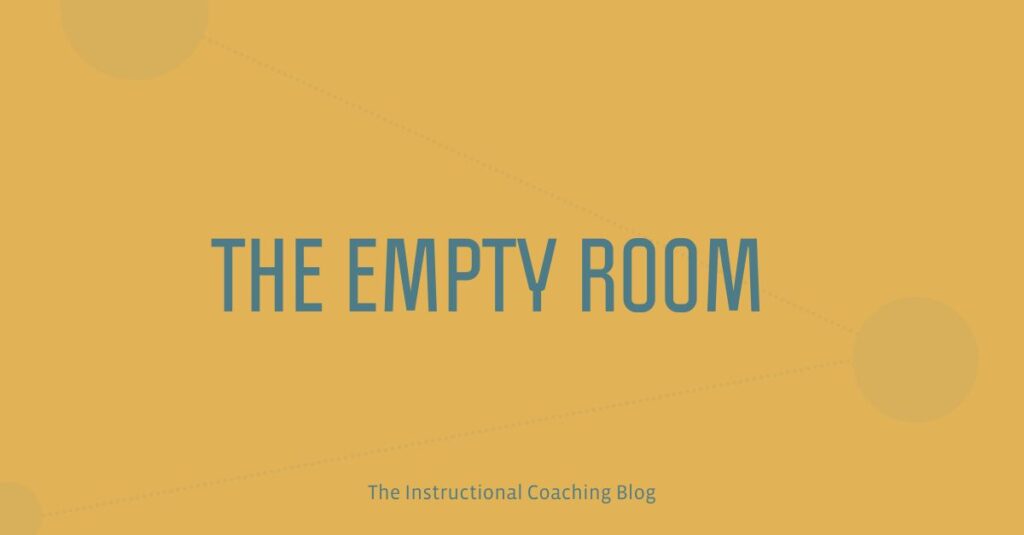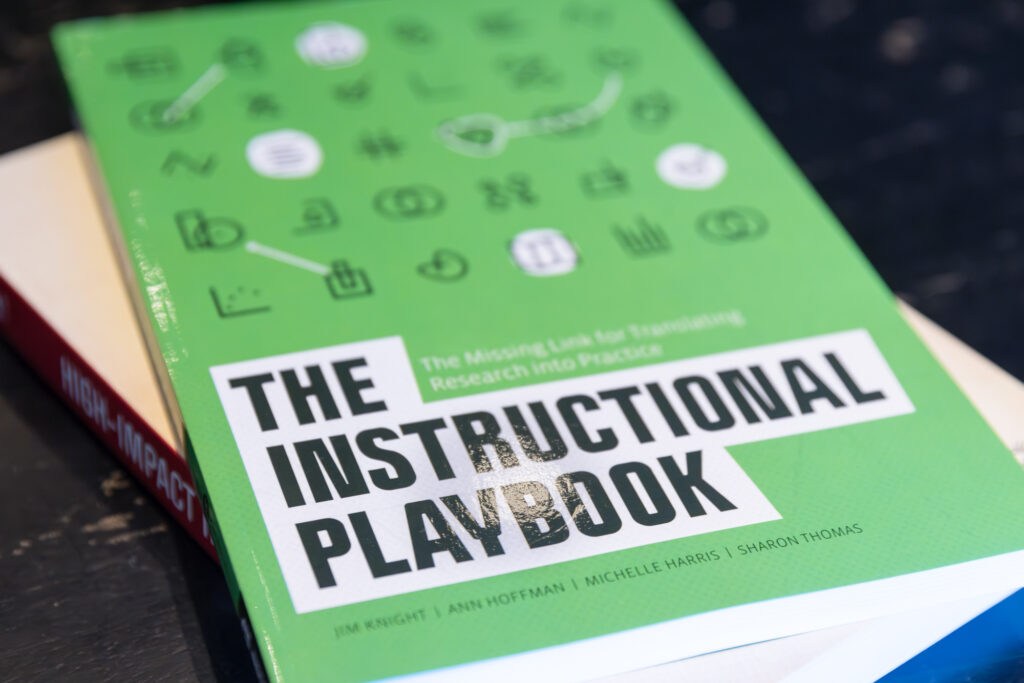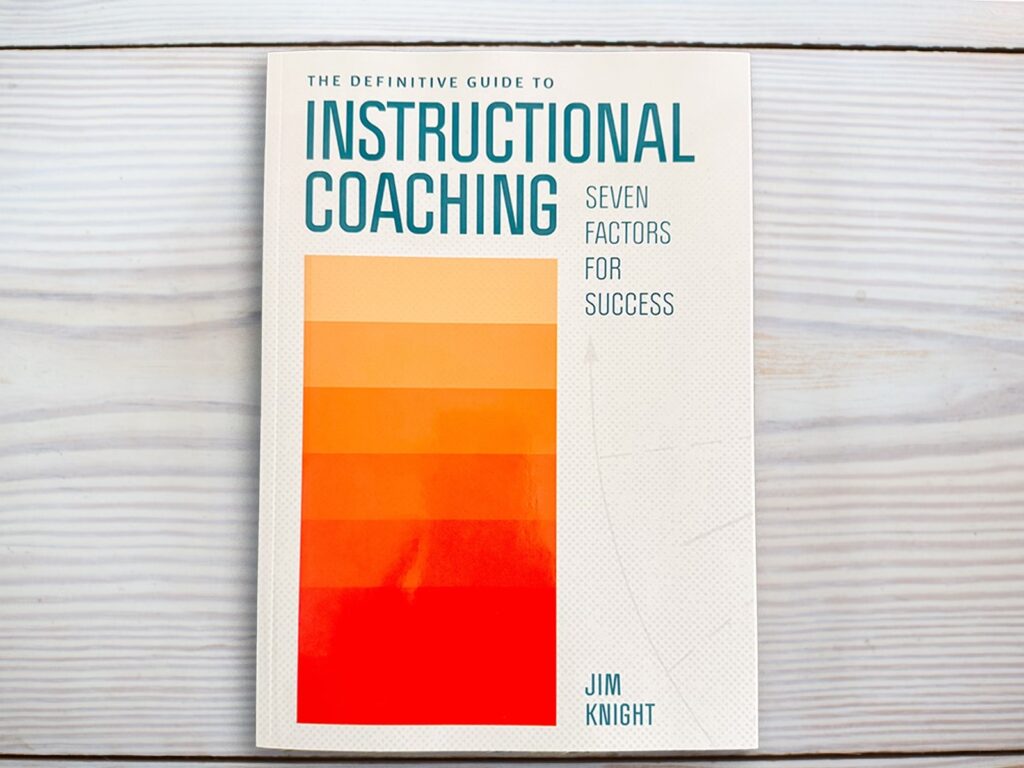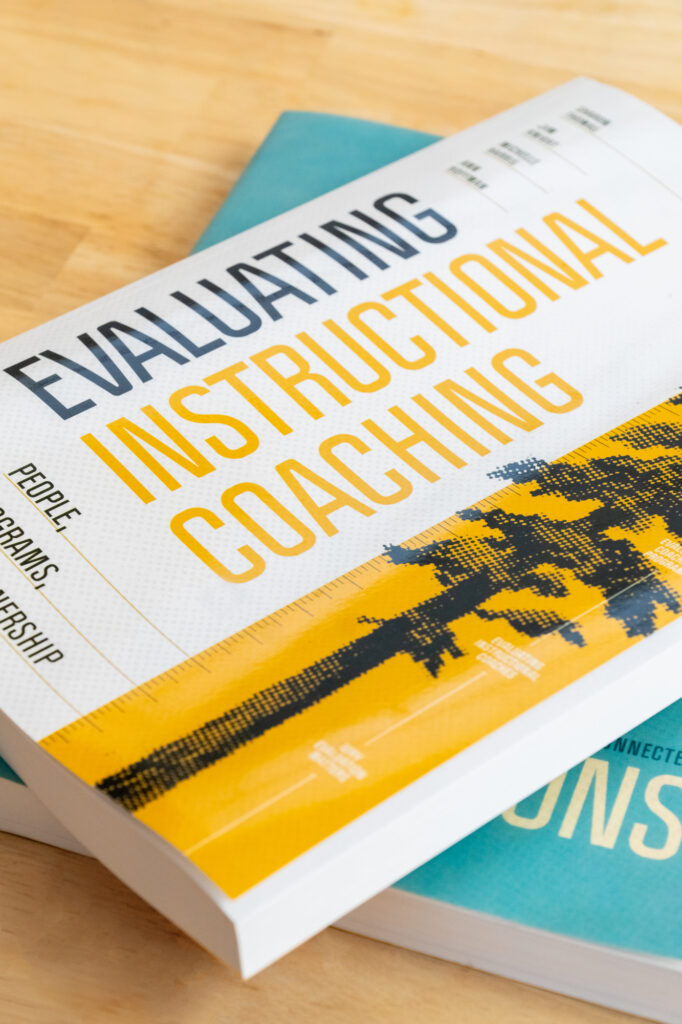Because of the importance of human interactions in instructional coaching, we advocate for a 360-evaluation approach to coaching evaluation. Unlike traditional evaluations that involve only the voices of evaluator and employee, 360 evaluations acknowledge the importance of the employee’s performance on other employees and on the success of the organization overall by incorporating feedback from stakeholders.
According to Christian van Nieuwerburgh (2017), a 360-evaluation approach is a “more robust and generally accepted way of collecting work-related feedback” than traditional evaluations (p. 66). Our 360-evaluation approach for instructional coaches gathers feedback on the coaches’ performance from the coaches themselves, the teachers they have coached, as well as administrators. Feedback from teachers is particularly powerful for coaches because the reciprocal nature of that dynamic reinforces partnership in a deep and real way by valuing the teacher’s perspective in the process.
van Nieuwerburgh (2017) sees another positive benefit of 360-evaluations for coaches. When receiving feedback from multiple perspectives, coaches can use the information to target ways to improve coaching relationships moving forward.
Everyone involved must have clarity surrounding the expectations of their involvement. Some important items to address directly and openly from the start of the evaluation process are (a) confidentiality, (b) how perception influences rankings on the forms, and (c) consistency in providing support to each evaluator in using the forms.
As with all elements of evaluation, communicating with stake-holders early and engaging them as part of creating fair coach evaluation will ensure that everyone understands and supports the evaluation system that evolves.
To develop a process for creating a sound coach evaluation process, we recommend these steps:
- Examine our coaching standards (Appendix 1) to determine the parameters of the instructional coach role.
- Create a job description for the coach role that aligns with the standards and indicators you chose.
- Examine the instructional coach rubric (Appendix 2) to determine success criteria and ranges of performance for the tasks listed on the job description.
- Determine the types of data you will accept as evidence of performance on the rubric.
- Examine and modify the coach, teacher, and administrator feedback forms (Appendices 3, 4, and 5) to align 360 feedback with the standards and job description. Determine also how to distribute and collect those forms while ensuring confidentiality and HR standards surrounding feedback.
- Determine the coach evaluation process parameters (time points for observations/evaluations during the school year, time points for various data pieces, etc.)
- Determine how the employer will approach feedback with coaches and how the employer will create an environment conducive to encouraging the coach’s voice in those conversations.
- Develop a plan for how to communicate the evaluation process to stakeholders, including gathering feedback to improve the process.
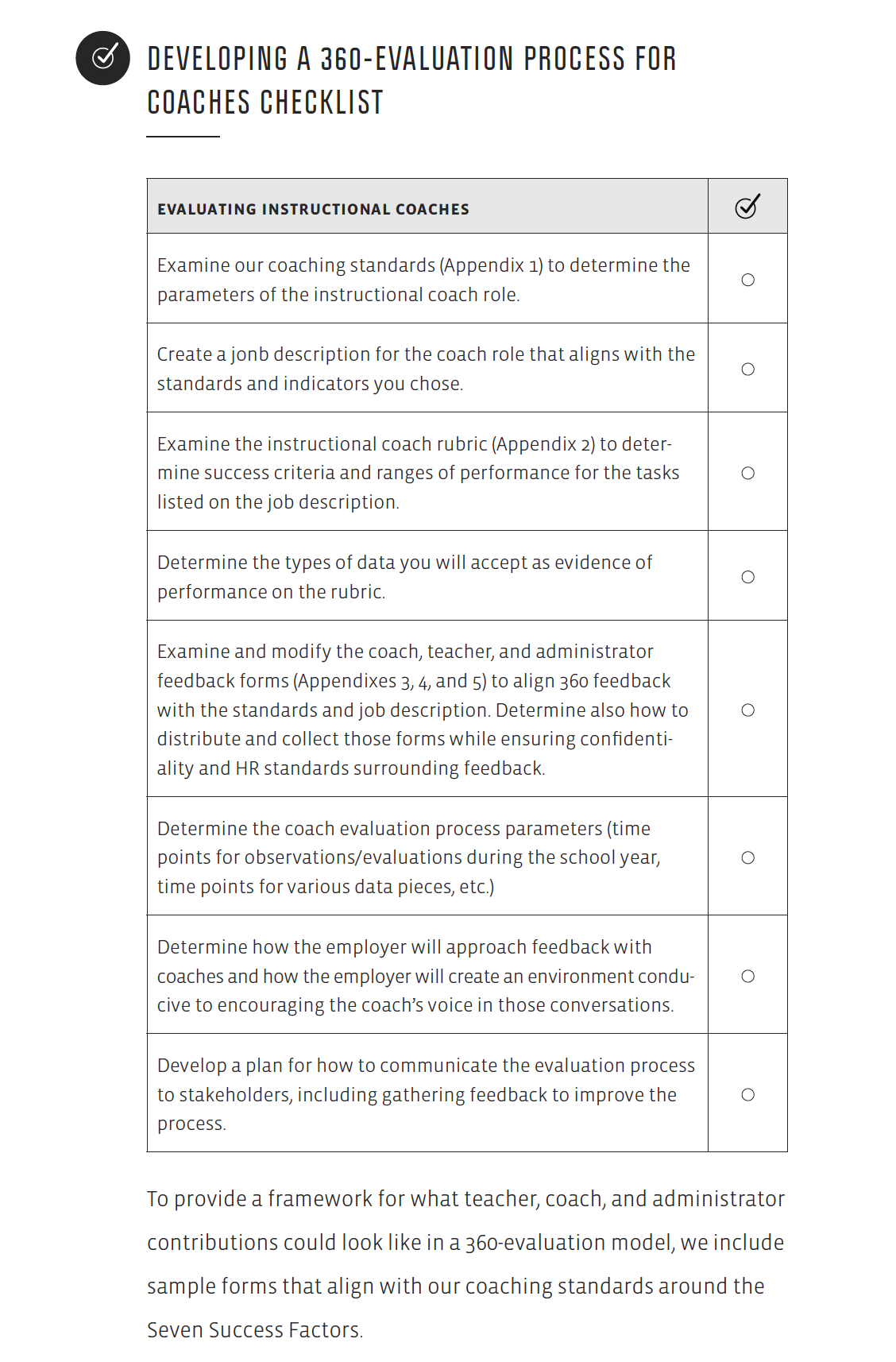
Learn more about Evaluating Instructional Coaching and supporting your coaching program and instructional coaches.
